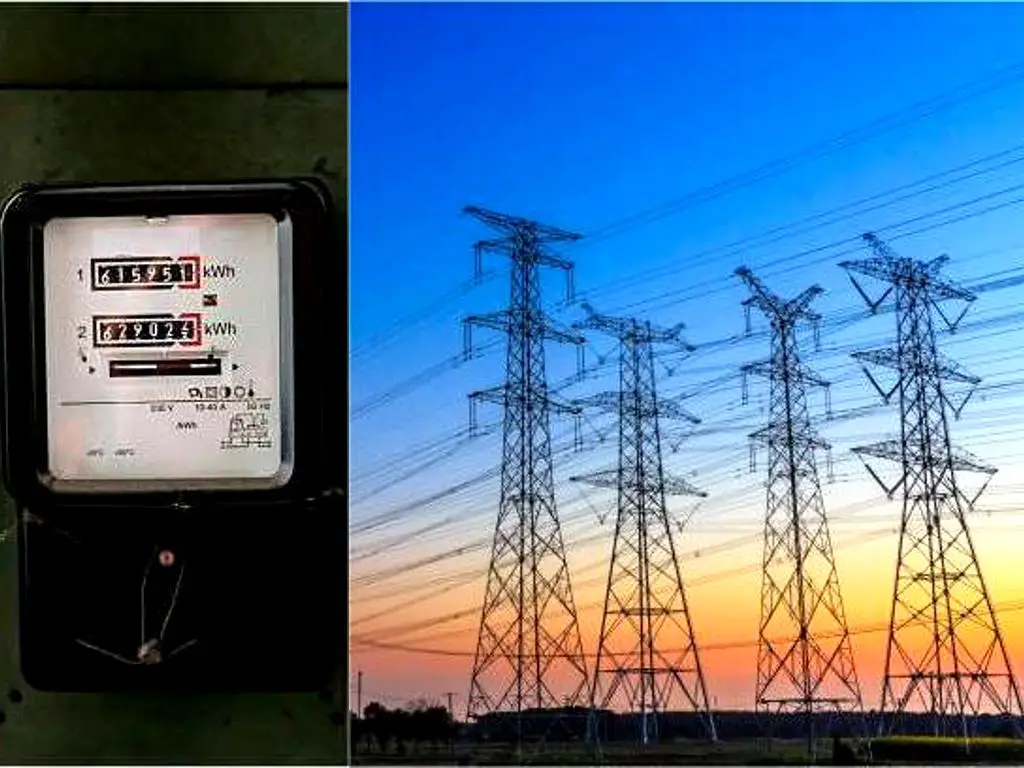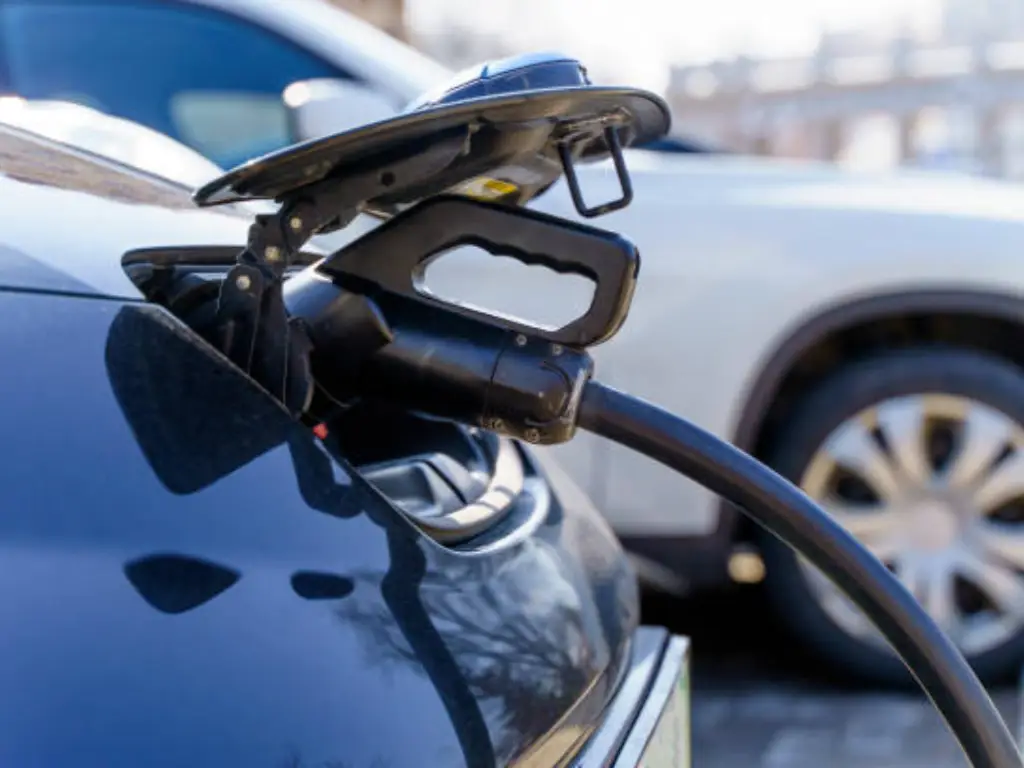Types Of MCB Explained: A Guide to Choosing The Right One
Share this article in Social Media:
- Home
- Types Of MCB Explained: A Guide to Choosing The Right One
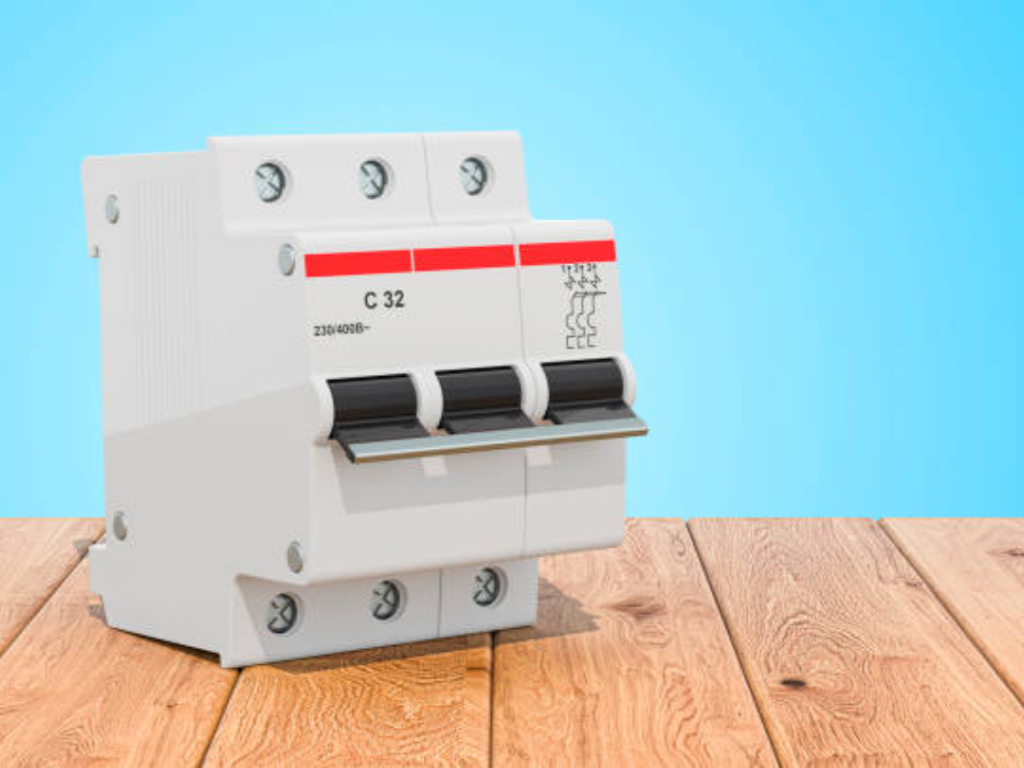
What Is a Miniature Circuit Breaker (MCB)?
A Miniature Circuit Breaker (MCB) is an automatic breaker that prevents damage to electrical circuits due to overcurrent. It has a very important dual purpose: to automatically interrupt current when there is a sustained overload, and to interrupt immediately when there is a short circuit. This will avoid overheating of wiring and protect electrical equipment connected to it.
In current Direct Current (DC) systems, including solar PV systems, it is important to differentiate between the MCB and a DC Isolator. A DC MCB is a protective device that is active and automatically trips when there is a fault. A DC Isolator, on the other hand, is a manual safety switch that is used to de-energize a circuit to allow maintenance. The MCB offers independent safety against electrical faults, whereas the isolator offers a safe point of disconnection to technicians. These two are necessary to have a complete and secure PV system.
How an MCB Protects Your Electrical Circuits
There are two internal mechanisms used by an MCB to protect against two different electrical faults: overloads and short circuits. This dual system enables it to respond to gradual and instant threats accordingly.
- Thermal Protection (against Overloads): An overload is a continuous current that is greater than the current-carrying capacity of the circuit, and leads to excessive heat accumulation in the wiring. The MCB deals with this using a thermal trip mechanism constructed using a bimetallic strip. This excess current gradually heats this strip, and it bends. After a certain time, the bending strip releases the switch to interrupt the circuit before the wires overheat. This delay enables the MCB to disregard non-hazardous transient inrush currents of motors.
- Magnetic Protection (against Short Circuits): A short circuit is a huge and almost instantaneous current burst due to a low resistance fault path. In order to fight this, the MCB employs a magnetic trip mechanism. The breaker has a solenoid coil, which creates a magnetic field, which in the case of a short circuit, is strong enough to trigger a plunger immediately. This act activates the switch within a fraction of a second, which is a quick reaction to avoid the devastating effects of short circuits.
The Critical MCB Types Difference: AC vs. DC Circuits
The first requirement to choose the right MCB is knowledge of the nature of the electrical system it will be used to protect: Alternating Current (AC) or Direct Current (DC). Although both of them supply electrical energy, their physical properties are extremely different, which has a significant influence on the requirements imposed on a circuit breaker.
Alternating Current (AC)
The common type of electricity supplied by the grid to households and businesses is Alternating Current. It is characterized by the fact that the current periodically changes direction and its voltage crosses the zero 100 or 120 times per second. This is a zero-crossing point that is a natural partner of a circuit breaker. An electrical arc occurs between the contacts of the breaker when the contacts are opened to interrupt a fault. The next excursion of the AC waveform through zero volts gives a temporary relief in which the arc is weakened and it becomes much easier to extinguish.
Direct Current (DC)
Direct Current, on the other hand, has a fixed voltage and direction of flow. It is the natural power of batteries, solar panels, and the key to the latest technologies such as Battery Energy Storage Systems (BESS) and Electric Vehicle (EV) fast charging systems. When a DC circuit is broken, the arc that develops is insatiable; there is no zero-crossing point, so the voltage is constant, and the arc is fed by it. This sustained arc is very hard to put out and produces a lot of heat, and therefore, the protection of DC circuits is a much bigger technical problem. An AC-rated MCB used in a DC circuit is a gross safety breach; the breaker will probably not quench the arc, and will therefore destroy itself, causing a possible fire.
The Core: MCB Types by Tripping Curve
The most common way of categorizing MCBs is based on their tripping characteristics, i.e., the threshold at which the magnetic trip mechanism is activated. This is characterized by the trip curve, which is mostly classified as Type B, C, D, K, and Z.
Crucial Warning: IEC/EN standards define these curves for AC MCBs. Some manufacturers extend the same B/C/D labeling to DC-rated MCBs, but this is a manufacturer practice, not a universal standard. Always check that the device is specifically rated for DC operation (with Vdc and breaking capacity clearly marked). This is merely a functional correspondence classification. AC MCB should not be employed in a DC circuit, no matter what its trip curve is. The chosen device should be a dedicated DC MCB, clearly labeled with the required DC voltage (Vdc) and DC breaking capacity ratings of the particular application.
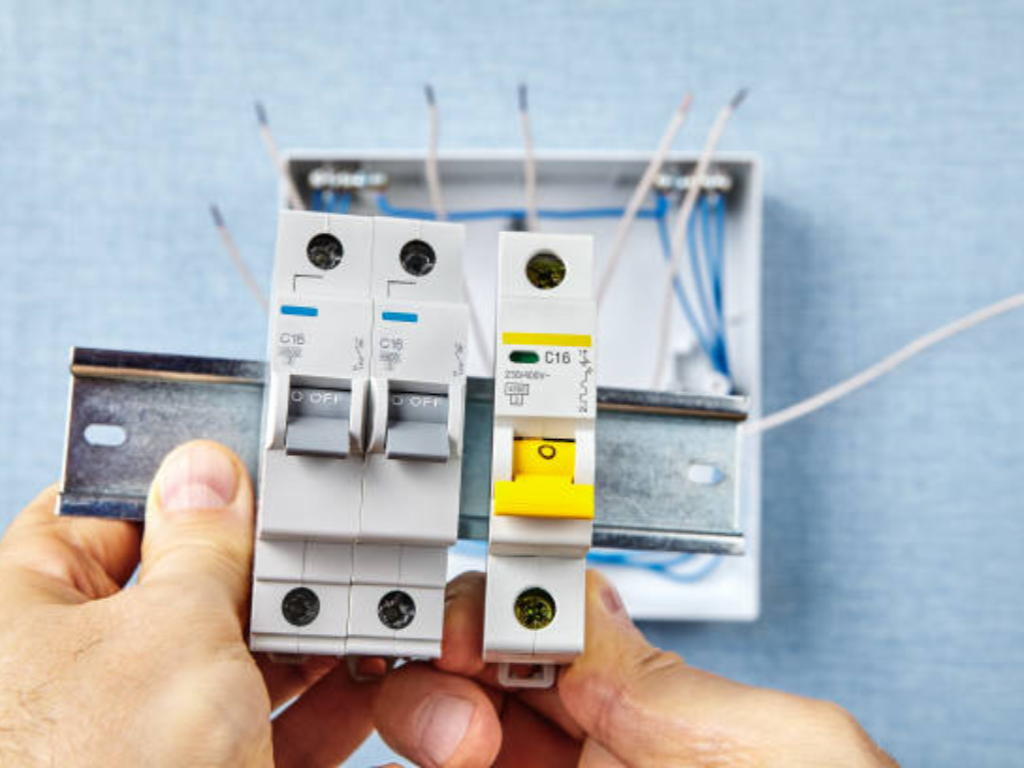
Type B: For Resistive Loads
A Type B Miniature Circuit Breaker is characterized by a high sensitivity to fault currents. Its tripping nature implies that the magnetic trip will be triggered immediately the current is at a level 3 to 5 times its rated current (In). This particular range is designed to work in circuits where any short circuit faults that might occur are likely to be small in nature and should be cleared as soon as possible in order to maintain as much safety as possible.
A Type B breaker is mostly used in circuits with low inrush currents. The first current that a device attracts when it is initially switched on is called inrush current. Appliances with purely resistive loads, e.g., electric heaters and incandescent lighting, or with modern electronic power supplies that control startup surges, have very low inrush. The Type B curve is carefully adjusted to overlook these small, non-hazardous surges and respond instantly to the signature of a real short circuit.
– AC Applications: Residential lighting systems, general-use socket outlets, and circuits with mostly resistive loads such as electric heaters and furnaces.
– DC Applications: Sensitive electronic devices, PLC control circuits, instrumentation, and other DC loads that do not cause large current surges during start-up.
Type C: The All-Purpose Choice
The most commonly used circuit breaker in commercial and industrial use is the Type C MCB, which is considered to be versatile. It is set to short at 5 to 10 times its rated current (In) instantly. This range is a healthy compromise, and is strong enough to survive the moderate inrush currents that are characteristic of inductive loads, avoiding nuisance tripping in normal operation.
This tripping feature enables the Type C breaker to consistently distinguish between a temporary, operating current surge and a hazardous short circuit. It is the default option of a huge variety of electrical systems that contain small motors, transformers, and lighting banks.
– AC Applications: Commercial lighting, small motors, fans, air conditioners, and general-purpose circuits in commercial buildings.
– DC Applications: This is the standard solution to most DC systems, such as photovoltaic systems, battery storage banks, DC motor circuits, and power supplies with moderate startup currents.
Type D: For High Inrush Currents
The Type D MCB is a specialist circuit breaker that is used in industrial settings where there is heavy equipment that generates extremely high inrush currents. It has the least sensitive tripping characteristic of the common types, and requires the current to be 10 to 20 times its rated current (In) to activate.
This is a low sensitivity, which is an intentional engineering characteristic. Starting currents in circuits with large transformers or industrial motors may be enormou,s but are a natural feature of the operation of the equipment. This operational surge would be viewed by a Type B or C breaker as a short circuit and would cause continuous and disruptive tripping. The Type D curve is set to ride through these severe, short initial periods and only trip in case of a true, large-scale short circuit fault.
– AC Applications: Large motors, transformers, welding machines, X-ray machines, and large winding motors.
– DC Applications: DC systems containing large capacitor banks, industrial-scale DC motor drives, and some high-power battery charging systems that have large initial current surges.
Type K & Z: For Sensitive Equipment
Type K MCBs operate at 8 to 12 times the rated current and are used to protect motors and transformers, and are more sensitive than Type D, being used for the protection of highly sensitive electronic equipment such as semiconductors, which can easily be damaged by even small current surges.
Summary of MCB Trip Curve Types
| MCB Type | Instantaneous Tripping Range (x Rated Current, In) | Primary Characteristic | Typical Applications (AC & DC) |
|---|---|---|---|
| Type B | 3x to 5x In | High Sensitivity | AC: Residential lighting, outlets. DC: PLC control circuits, sensitive electronics. |
| Type C | 5x to 10x In | Moderate / General Purpose | AC: Commercial lighting, small motors. DC: Photovoltaic (PV) systems, DC motors. |
| Type D | 10x to 20x In | Low Sensitivity | AC: Large motors, transformers. DC: Systems with large capacitor banks, high-inrush loads. |
| Type K | 8x to 12x In | Moderate-Low Sensitivity | AC/DC: Protection for motors and transformers requiring higher sensitivity than Type D. |
| Type Z | 2x to 3x In | Very High Sensitivity | AC/DC: Protection for highly sensitive semiconductor devices and measurement circuits. |
Classification by Rated Current (Amperage)
The simplest specification of an MCB is its Rated Current (In) beyond the trip curve. This is expressed in Amperes (A), and it represents the maximum current that the circuit breaker can carry continuously without tripping or incurring thermal damage. The most common ratings are 10A, 16A, 25A, 32A, and 63A.
The rated current is not a random figure; the choice of this figure is directly related to the load of the circuit and the gauge of the wire employed. The main role of this rating is to offer overload protection. It will make sure that the current passing through the circuit does not surpass the safe carrying capacity of the electrical wiring. In case the current is slightly higher than this rating over a long time, the thermal mechanism of the MCB will activate, and the wires will not be under a threat of overheating.
Classification by Breaking Capacity (kA Rating)
Whereas rated current is concerned with normal operating conditions and overloads, Breaking Capacity (or Interrupting Rating) is concerned with the worst-case situation: a significant short circuit. This rating is expressed in kiloamperes (kA), and this is the maximum prospective fault current that the MCB can safely interrupt without being destroyed in the process.
In case of short circuit, the current may immediately reach thousands of amperes. This releases a lot of thermal and magnetic energy in the breaker. Assume that the fault current is more than the breaking capacity of the breaker. Then the device will fail catastrophically; it can either weld its contacts together, or not clear the fault, or even blow up, and this is a serious safety concern. Normal breaking capacity ratings of MCBs are 6kA and 10kA. Industrial or other devices operating in an industrial or a place close to a utility transformer normally have a greater breaking capacity (e.g., 10 kA or higher) because the fault currents are greater.
How to Select the Perfect MCB: A Practical Guide
Choosing the correct MCB involves a systematic assessment of the circuit and its load. Following a two-step process ensures that all critical parameters are considered, resulting in a safe and reliable installation.
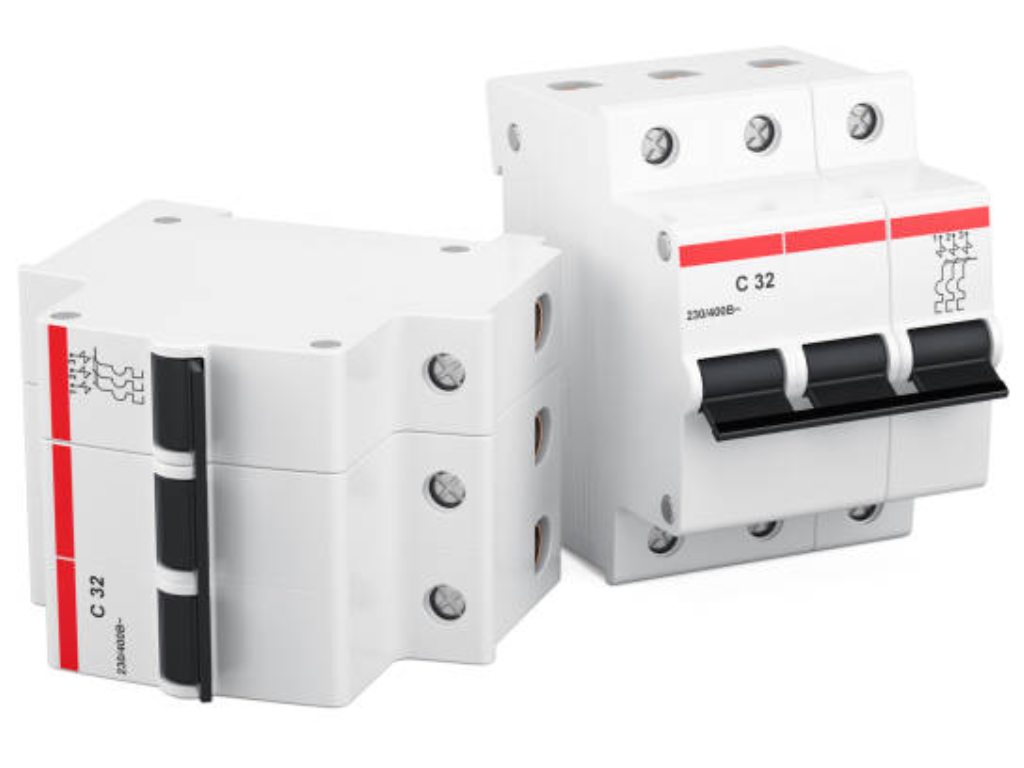
Step 1: Define Your System’s Core Parameters
Identifying the nature of the electrical system that the device will safeguard is the first step before choosing the device. This will entail answering four major questions:
- Type of System and Voltage: Is it AC or DC? Nominal operating voltage (e.g., 230 V AC, 48 V DC, 1000 V DC)? The MCB should be of the appropriate type and voltage for the system.
- Load Profile: What does the load entail? Is it resistive (lighting, heaters) or inductive (motors, transformers)? What would be the approximate size of the inrush current at startup? This will define the necessary trip curve (Type B, C, D, etc.).
- Present Requirements: What is the full load current of the circuit under normal conditions? The value is used to calculate the necessary Rated Current (Amperage) of the MCB.
- Fault Level: What is the highest potential short-circuit current at the time of installation? This defines the lowest Breaking Capacity (kA rating).
Step 2: A Guide to Mini Circuit Breaker Uses & Applications
Once the core parameters are defined, you can match them to the specific application.
AC Applications
- Residential: Primarily circuits for lighting and outlets. Typically requires Type B or Type C MCBs, 230/400V AC, 10-63A, with a 6kA breaking capacity.
- Commercial: Circuits for office lighting, HVAC systems, and general power. Usually requires Type C MCBs, 230/400V AC, 10-63A, with a 6-10kA breaking capacity.
- Industrial (Motors): Protection for motors and other inductive equipment. Often requires Type D or Type K MCBs, 400V AC, ≤63A, and a breaking capacity of 10kA or higher.
- Sensitive Electronics: Protection for control circuits and electronic devices. Demands high-sensitivity Type Z MCBs, 230V AC, ≤16A, and 6kA breaking capacity.
DC Applications
Direct Current (DC) applications are a high-performance, specialized area that does not compromise on specialized, high-performance protection. This is where BENY has its core expertise, and our components are not just products, but solutions to critical infrastructure that are engineered.
- Solar Photovoltaic Systems: DC MCBs are used in both distributed and utility-scale solar systems. A Type C is typically selected to handle the inrush currents from inverters without nuisance tripping. And need to operate in severe environments and be capable of operating at DC voltages of up to 1500 V. Our PV-specific DC circuit breakers are engineered and put through rigorous environmental testing, such as high-temperature cycling and salt spray corrosion, to last decades of dependable service. This is the reason why they are the preferred option to be integrated into Combiner Boxes as the initial defense of valuable solar assets.
- EV Charging Stations and Commercial Battery Storage (BESS): Protection for high-power charging circuits. Necessitates robust Type C or Type D DC MCBs rated for up to 1000V DC and capable of handling high amperage and fault levels. These applications are characterized by high-power transfer and the possibility of enormous fault currents from battery sources. The most important thing is the safety and reliability of the protection device. BENY constructs its DC MCBs using high-quality internal components of global brands such as Infineon and Onsemi. This makes our breakers capable of reliably operating the demanding cycles and safely interrupting high fault currents, which is confirmed by our large UL, TUV, and SAA certifications.
- UPS and Mission-Critical Applications: Reliability is the primary concern in data centers and industrial UPS systems. A Type B or Type C is typically used to provide sensitive protection for electronic loads while avoiding nuisance trips. Uptime is all in data centers or industrial Uninterruptible Power Supply (UPS) systems. There is no possibility of a circuit protection failure. In such settings, clients have confidence in BENY due to our 30 years of electrical research and development and substantial investment in innovation. We have a history of reliability and engineering depth to support these mission-critical operations.
- Inside a Combiner Box: The core of a solar combiner box is the integration of multiple DC overcurrent protection devices, typically DC MCBs. Solutions from BENY offer pre-engineered combiner boxes that integrate their high-performance DC MCBs, providing EPC clients and installers with a verified, plug-and-play protection system for streamlining solar array installation.
To system integrators and equipment manufacturers, BENY is not just a supplier, but an expert partner, with profound OEM/ODM customization to create custom protection solutions to any sophisticated DC application.
Comparing Different Types of MCB Circuit Breakers
The term “circuit breaker” encompasses a family of devices. Understanding the key distinctions is vital.
- MCB (Miniature Circuit Breaker): This restricts the current flowing on the circuit to a level mostly limited to 125A with overload and short circuiting protection. It has a fixed trip setting.
- MCCB (Molded Case Circuit Breaker): It also has overload and short-circuit protection, but is available in higher currents (up to 1600A or higher) and is used industrially. Most MCCBs have adjustable trip settings.
- RCCB (Residual Current Circuit Breaker): The device via this may be only used to protect against electric shock by earthing the circuit (leakage current only). It does not provide overload or short circuit protection and must be installed in series with an MCB or MCCB.
- RCBO (Residual Current Breaker with Overload): One device that has been able to replace the functionalities of both MCB and RCCB in one device, giving overload, short-circuit, and earth fault protection.
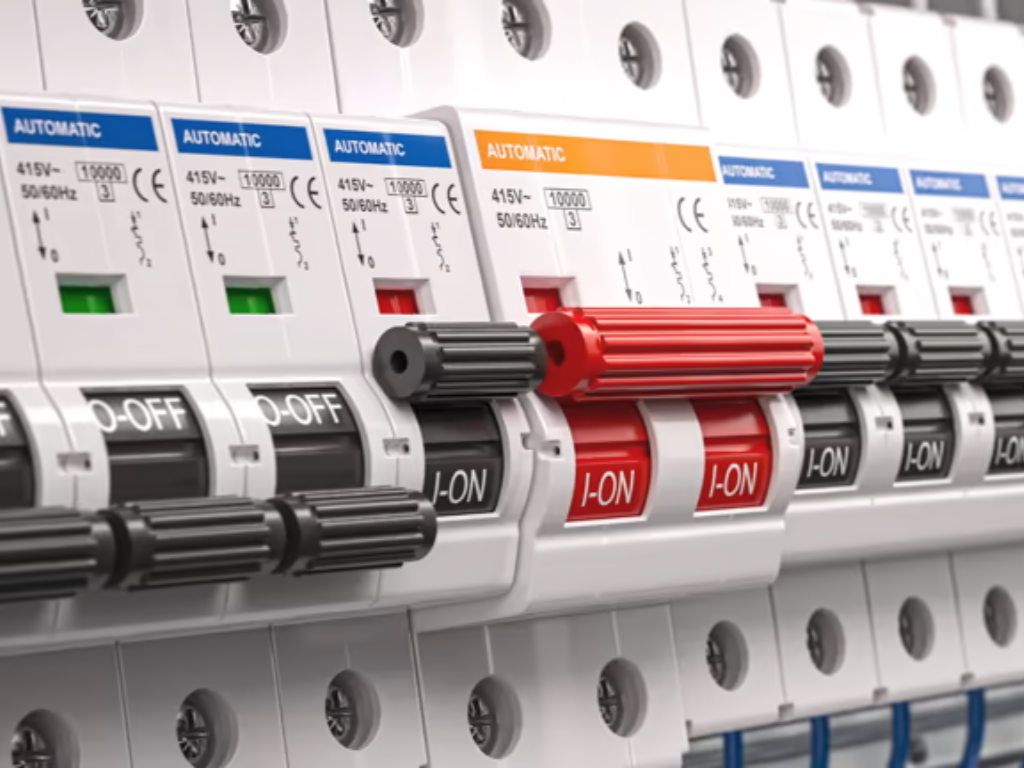
FAQ About Types Of MCB
⚡ Is it possible to use a Type C in place of a Type B MCB?
Although it is physically possible, it should not be done without an adequate evaluation. Substitution of Type B with Type C makes it less sensitive to short circuits. This may increase the tripping time in case of a fault, which may pose a safety hazard if the circuit wiring cannot sustain the fault current for that period.
🔌 What does the “6000” on my MCB mean?
The number 6000 (or 6kA) indicates the breaking current of the MCB in amperes. It means the device can safely interrupt a short-circuit fault current of up to 6000 Amps.
⏳ Are MCBs wearable or do they have a lifespan?
MCBs are durable and offer a long service life, typically thousands of mechanical operations. However, after tripping a significant short-circuit fault at or near their breaking capacity, they should be inspected and possibly replaced, as internal components may have been overstressed.
Conclusion: A Holistic Approach to Circuit Safety
The choice of a Miniature Circuit Breaker is an important choice that goes way beyond matching an amperage rating. It needs a comprehensive grasp of the electrical environment, both the basic distinction between AC and DC power, and the minor yet important differences in the tripping characteristics as specified by trip curves.
Partnering for Success: How Beny Helps You Select the Right MCB
© 2025 MCB Selection Guide – Professional DC Protection Solutions

